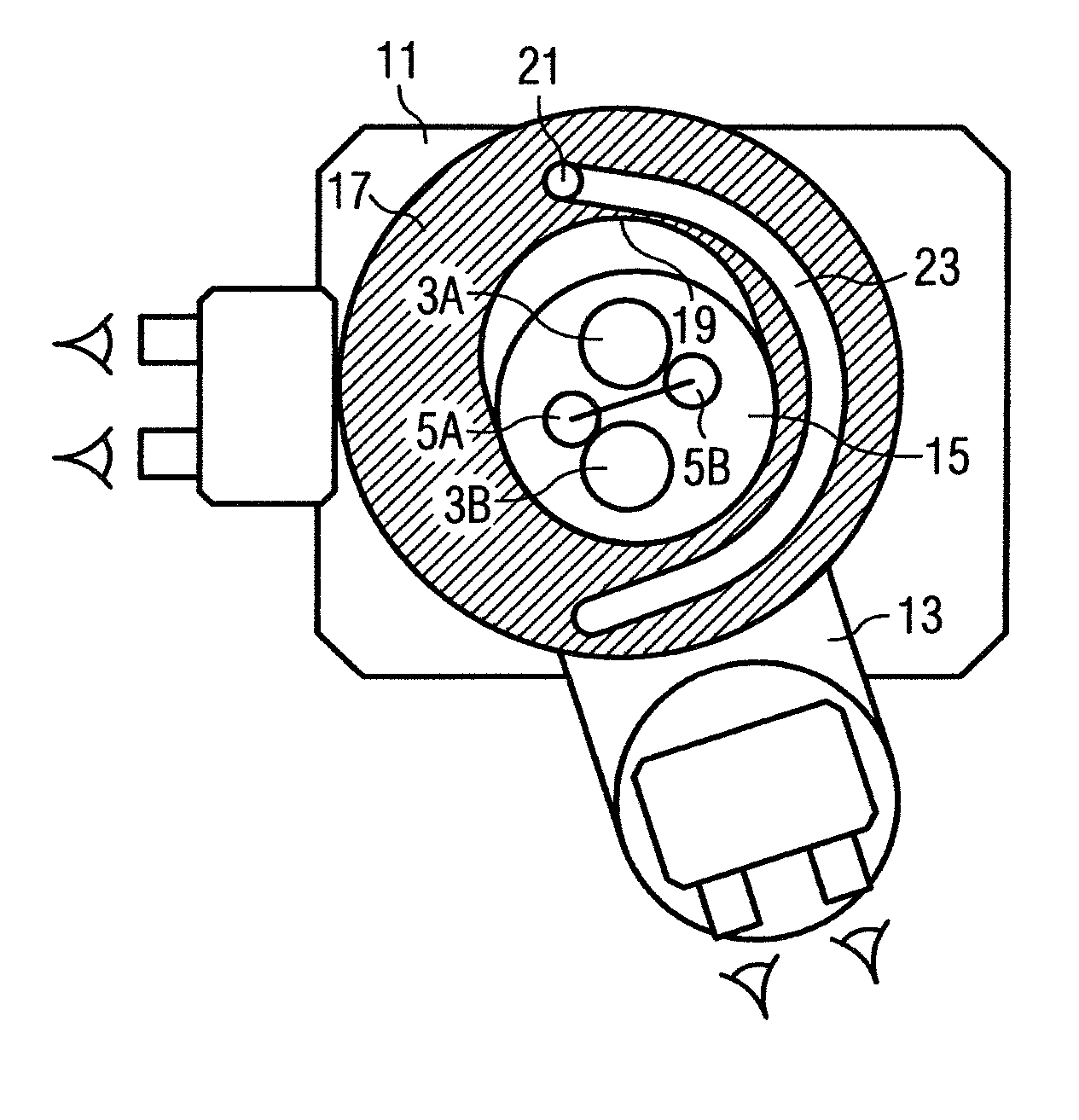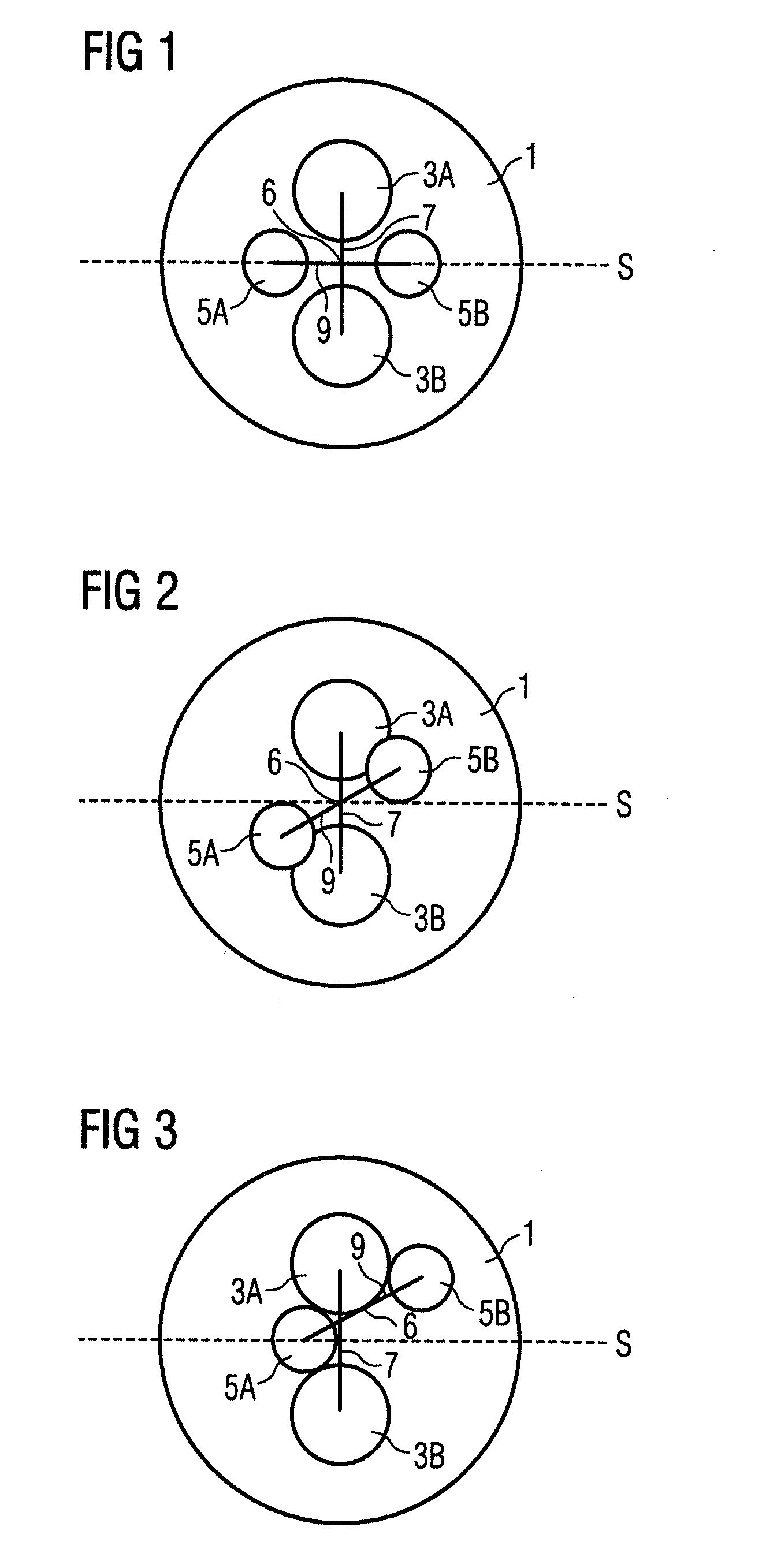Operating microscope and method for pivoting a co-observer microscope
a co-observer and microscope technology, applied in the field of operating microscopes, can solve the problems of affecting the use of the beam splitter for decoupling the beam path of the co-observer, and not having the full image brightness, so as to improve the utilization of space and increase the positioning options
- Summary
- Abstract
- Description
- Claims
- Application Information
AI Technical Summary
Benefits of technology
Problems solved by technology
Method used
Image
Examples
Embodiment Construction
[0030]Hereinbelow, FIGS. 1 to 3 are first of all used to explain the underlying principle of the invention before exemplary embodiments of operating microscopes, in which the principle according to the invention has been implemented, are subsequently described.
[0031]FIG. 1 shows a section along the objective plane of the main objective 1 of an operating microscope with a main observer microscope and a co-observer microscope, and also shows the observation pupils 3a, 3b of the stereoscopic main observer beam path and the co-observation pupils 5a, 5b of the stereoscopic co-observer beam path. Moreover, imagined connecting lines 7, 9 are indicated, which interconnect the centers of the two main observation pupils 3a, 3b or the two co-observation pupils 5a, 5b.
[0032]The main observation beam path with the main observation pupils 3a, 3b passes through a main observer microscope (not illustrated in FIGS. 1-3), whereas the co-observation beam path with the co-observation pupils 5a, 5b pas...
PUM
 Login to View More
Login to View More Abstract
Description
Claims
Application Information
 Login to View More
Login to View More - R&D
- Intellectual Property
- Life Sciences
- Materials
- Tech Scout
- Unparalleled Data Quality
- Higher Quality Content
- 60% Fewer Hallucinations
Browse by: Latest US Patents, China's latest patents, Technical Efficacy Thesaurus, Application Domain, Technology Topic, Popular Technical Reports.
© 2025 PatSnap. All rights reserved.Legal|Privacy policy|Modern Slavery Act Transparency Statement|Sitemap|About US| Contact US: help@patsnap.com



